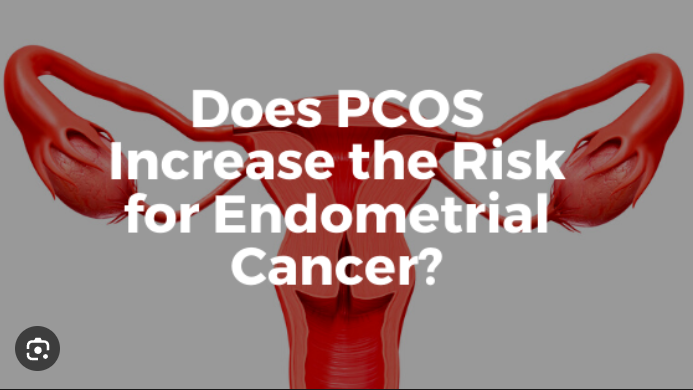Endometrial cancer is on the rise. But early detection saves lives.
The number of cases of endometrial cancer, which starts in the uterine lining, is rising.
The most recent trending data from the Centers for Disease Control and Prevention show that uterine cancer incidence rates increased by 12% between 1999 and 2015, partly due to the obesity epidemic. This rise distinguishes many other cancers, which are becoming less common, from endometrial cancer, which is by far the most prevalent type of uterine cancer.
According to the American Cancer Society, over 12,000 women will lose their lives to uterine cancer, with approximately 62,000 new cases expected to be diagnosed this year alone. According to the ACS, it’s also the most prevalent cancer that affects the female reproductive system.
Also read-Wonders Of Diet: 9 Foods To Boost Calcium Levels Naturally

Excess weight contributes to increased estrogen, which raises a woman’s risk of developing it . The endometrium is affected by the hormones estrogen and progesterone, which are produced in the ovaries, says Dr. Mehdi Kebria, a gynecologic oncologist at City of Hope, a comprehensive cancer center based in Duarte, California, near Los Angeles. “Excessive estrogen exposure leads to thickening of the endometrium, and eventually, long-term exposure to high amounts of estrogen can lead to endometrial cancer.”
Causes endometrial cancer
It risk is increased by obesity and related conditions such as type 2 diabetes and high blood pressure. Among the risk factors for this cancer are:

- Being overweight.
- Diabetes.
- Age: As you age, your risk increases.
- Having close family members with colorectal or endometrial cancer, such as a parent or sibling.
- Exposure to the hormone therapy medication tamoxifen, which is used to treat breast cancer
- Lynch syndrome is a genetic disorder.
Prevention
In order to prevent uterine cancer, some women with Lynch syndrome choose to have a hysterectomy, or surgical removal of the uterus. Experts emphasize, however, that choices about treatment and prevention should be personalized and informed by a conversation between the patient and a physician who specializes in treating uterine cancer, such as a gynecologic oncologist.

Everyone should aim to keep a healthy weight in order to reduce their risk of cancer. Particularly for obese postmenopausal women, weight loss is linked to a decreased risk of endometrial cancer, according to research.
“For overweight women, weight loss combined with a well-balanced diet can lower their risk of endometrial cancer,” says Kebria. Utilizing progesterone-releasing intrauterine devices (IUDs), another type of birth control, and oral contraceptives can both lower a person’s risk of endometrial cancer, he notes.
Symptoms
Early detection of endometrial cancer greatly improves the prognosis for patients and can ultimately help them outlive it. The American Cancer Society estimates there are more than 600,000 endometrial cancer survivors in the U.S. today.

Possible signs of endometrial cancer to look for are:
- Unusual vaginal bleeding or spotting.
- Abnormal vaginal discharge, even without bleeding.
- Pelvic pain.
- Painful urination.
- Unexplained weight loss.
Diagnosis
If you experience unusual vaginal spotting or bleeding, seeing your gynecologist for an evaluation that includes a pelvic exam is a good place to start.

Depending on your symptoms or if you’re at higher risk for endometrial cancer, a variety of different tests may be done to determine if you could have endometrial cancer. That could include:
- Endometrial biopsy.
- Transvaginal ultrasound.
- Hysteroscopy.
- Imaging like a CT scan for cancer that may have spread.
Treatments
To best gauge a patient’s prognosis and options for treating endometrial cancer, staging is critical.
Stage 1 endometrial cancer, for example, is limited to the uterus and perhaps the glands of the cervix. The most advanced form, stage 4 endometrial cancer, has spread well beyond the uterus and could be in “distant sites,” ranging from the lungs to the liver to the bones.

Fortunately, endometrial cancer is usually caught in stage 1. And the treatment for this uterine cancer is commonly surgery to remove the uterus. The modern procedure tends to be minimally invasive, done through small incision sites to lessen pain afterward and speed recovery.
Depending upon the extent of the cancer, the ovaries and, in some cases, the surrounding lymph nodes (immune system glands) are removed as well. “In some cases, if the cancer is found to have spread beyond the uterus, the use of chemotherapy or radiation therapy after hysterectomy may become necessary,” Kebria says.
Also read-Breast Cancer : A Patient’s Guide To Breast Cancer
images source: Google
Disclaimer: The opinions and suggestions expressed in this article are solely those of the individual analysts. These are not the opinions of HNN. For more, please consult with your doctor.




































